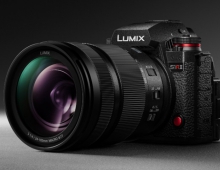
Panasonic Develops H.264/3D Graphics LSI Using a 45-nm Process
Panasonic, has recently developed a new-generation of its UniPhier system LSI that integrates new AV data compression/decompression technology.
The company started mass-production of the new UniPhier this month by applying a 45-nm process to a system LSI.
Panasonic UniPhier system LSIs provide integrated platforms for digital electronics and are already used widely in all Panasonic digital AV devices. This new-generation UniPhier is however equipped with high performance for processing motion/still image data and further improves the technology with the addition of an AV codec that responds to the next-generation image data compression standard, such as H.264/VC-1/MPEG-2, ideal for handling high-definition images.
As a result, data compressed down to one third to half that of the conventional methods can be sent to the network while retaining high image quality even for high definition images.
Panasonic's UniPhier LSI enables enables two 1080p (1920X1080) high-definition (HD) screens to be processed simultaneously, and a high image quality encoding technology to compress 1080p HD images to a one third to half the size of conventional methods. In addition,it features a 3D graphic processing technology and symmetric multi-processor technology.
Additionally, using the 45-nm semiconductor process, Panasonic achieves a single-chip, low-power system LSI with enhanced capabilities. The LSI integrates 250 million transistors on a chip.
Panasonic started mass producing system LSIs at its semiconductor factory in Uozu in Central Japan this month.
Panasonic UniPhier system LSIs provide integrated platforms for digital electronics and are already used widely in all Panasonic digital AV devices. This new-generation UniPhier is however equipped with high performance for processing motion/still image data and further improves the technology with the addition of an AV codec that responds to the next-generation image data compression standard, such as H.264/VC-1/MPEG-2, ideal for handling high-definition images.
As a result, data compressed down to one third to half that of the conventional methods can be sent to the network while retaining high image quality even for high definition images.
Panasonic's UniPhier LSI enables enables two 1080p (1920X1080) high-definition (HD) screens to be processed simultaneously, and a high image quality encoding technology to compress 1080p HD images to a one third to half the size of conventional methods. In addition,it features a 3D graphic processing technology and symmetric multi-processor technology.
Additionally, using the 45-nm semiconductor process, Panasonic achieves a single-chip, low-power system LSI with enhanced capabilities. The LSI integrates 250 million transistors on a chip.
Panasonic started mass producing system LSIs at its semiconductor factory in Uozu in Central Japan this month.




















